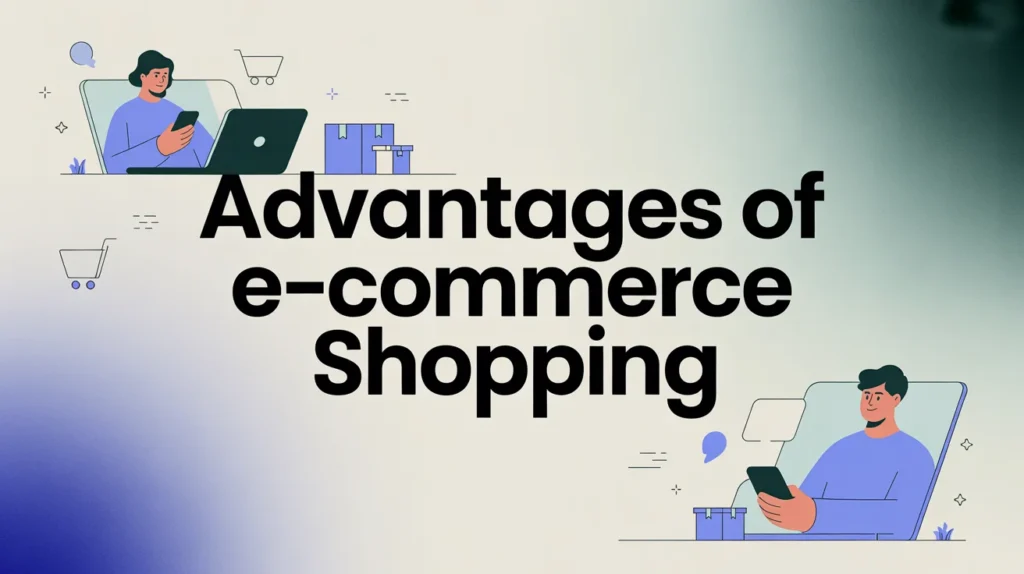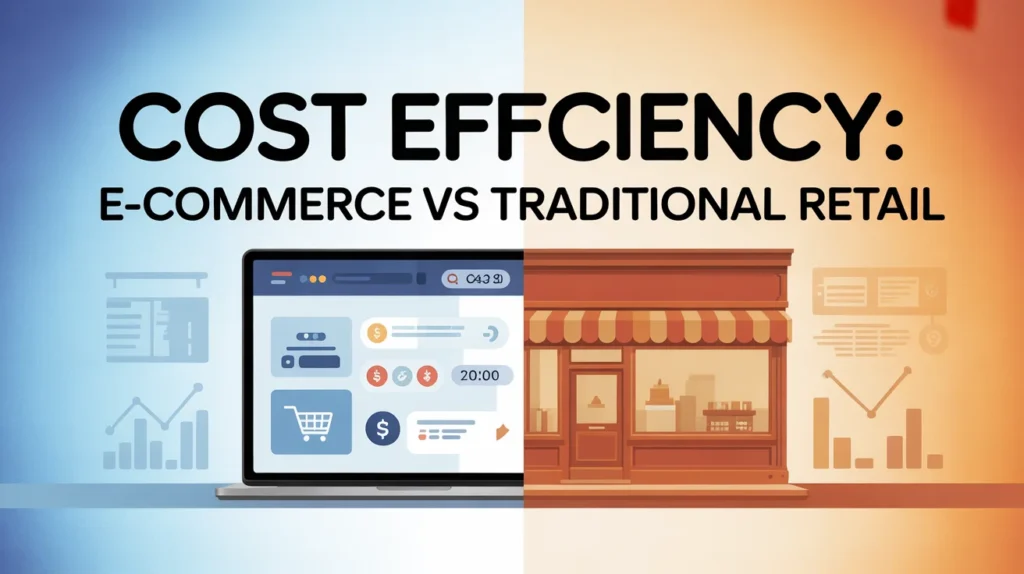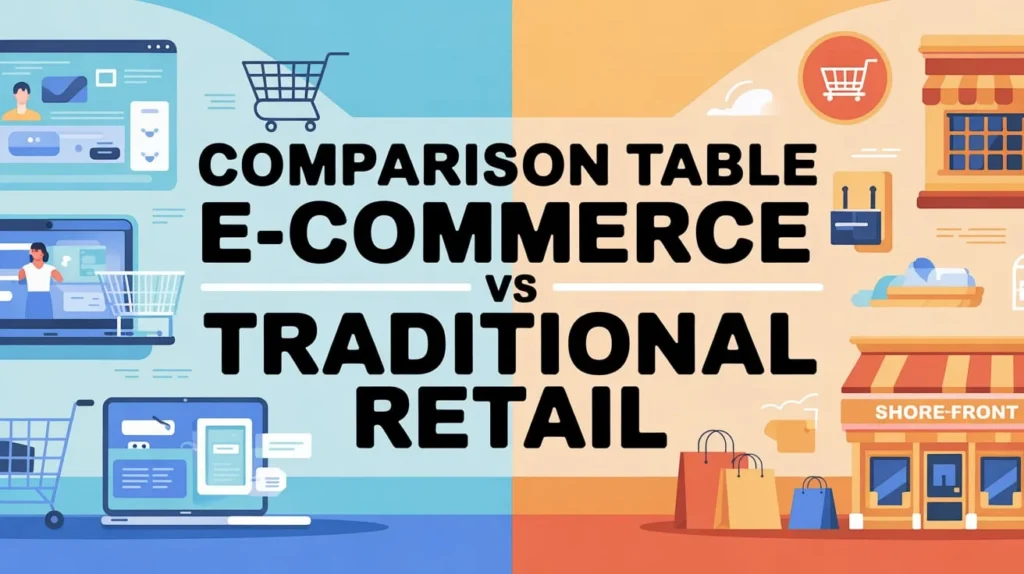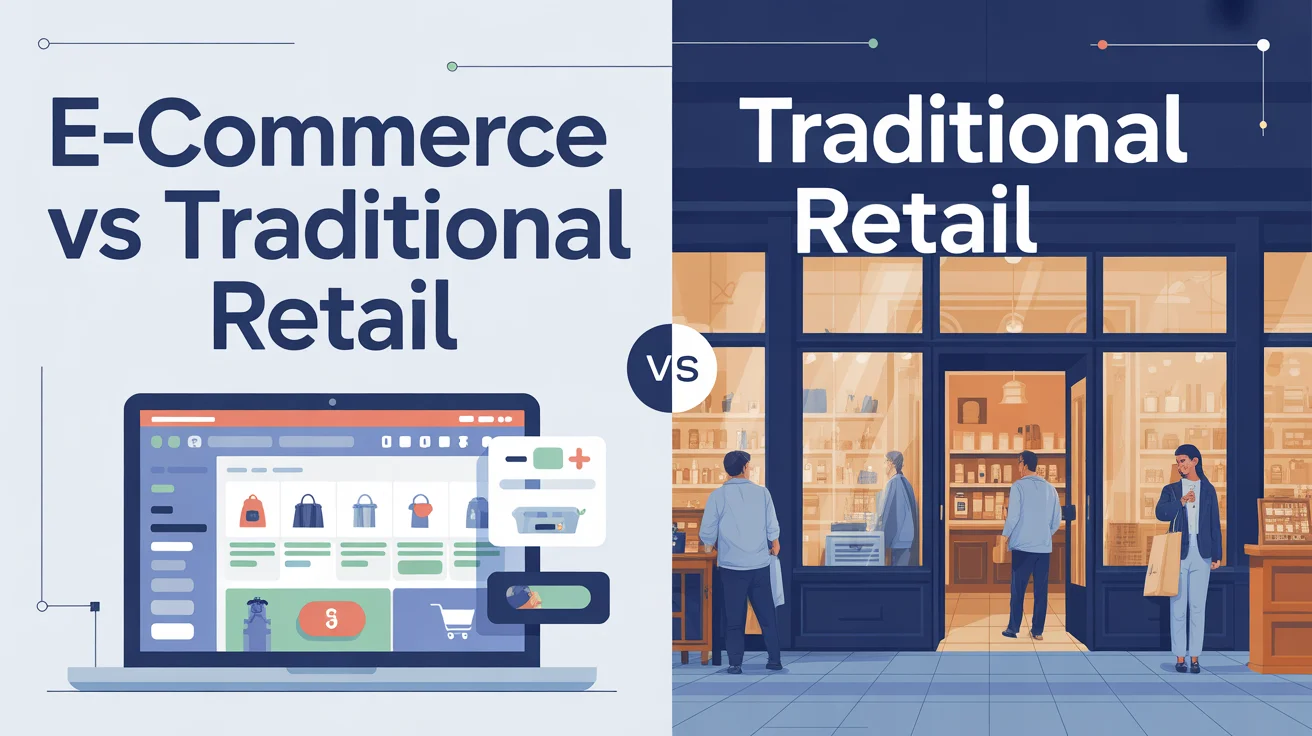In today’s fast-changing business world, the debate of e-commerce vs traditional retail is more relevant than ever. Shoppers are torn between the convenience of buying online with just a few clicks and the tangible, in-person experience of walking into a physical store. While e-commerce offers speed, variety, and global access, traditional retail brings trust, face-to-face interaction, and instant product availability. Businesses, consumers, and entrepreneurs are constantly weighing which model is better for growth, satisfaction, and long-term sustainability.
This article explores the pros, cons, and key differences of e-commerce and traditional retail, giving you an in-depth look at how both models shape consumer behavior and the future of shopping.
The Core Difference Between E-commerce and Traditional Retail
At its heart, the major difference lies in where and how the shopping experience happens. E-commerce occurs online through websites, apps, or marketplaces, while traditional retail happens in physical stores.
Advantages of E-commerce Shopping

- 24/7 availability without time restrictions
- Wider product variety and global reach
- Lower operational costs compared to physical stores
- Easy price comparison and product research
- Contactless payments and doorstep delivery
Challenges of E-commerce
- Lack of physical product inspection
- Delivery delays or shipping costs
- Higher return and refund complexities
- Limited personal interaction with staff
- Dependence on internet connectivity
Strengths of Traditional Retail Stores
- Instant product availability
- Tangible shopping experience (touch, feel, try before buying)
- Stronger customer service and in-person guidance
- Builds trust through face-to-face interactions
- Opportunity for impulse purchases
Drawbacks of Traditional Retail
- Limited store hours and accessibility
- Higher overhead costs (rent, staff, utilities)
- Restricted product variety compared to online stores
- Requires travel time and effort for customers
- Slower adaptation to global consumer trends
Cost Efficiency: E-commerce vs Traditional Retail

E-commerce typically has lower startup and running costs since it eliminates expenses like rent, utilities, and large staff. Traditional retail, however, often faces high fixed costs but provides a strong sense of community and brand visibility.
Consumer Experience in E-commerce and Retail
E-commerce focuses on convenience and personalization through AI recommendations, while traditional retail emphasizes in-store experiences, ambiance, and face-to-face service.
Technology’s Role in Shopping Models
Technology fuels e-commerce through digital marketing, AI, chatbots, and secure payment gateways. On the other hand, traditional retail increasingly relies on POS systems, AR/VR fitting rooms, and digital loyalty programs to keep up.
Global Reach: Online vs Local Stores
E-commerce breaks geographical barriers, allowing a business in one country to serve customers worldwide. Traditional retail is more localized, focusing on community engagement and customer loyalty within a limited region.
Comparison Table E-commerce vs Traditional Retail

| Aspect | E-commerce | Traditional Retail |
| Accessibility | 24/7, anywhere with internet | Limited to store hours, physical visit |
| Costs | Lower operational expenses | Higher overhead (rent, utilities, staff) |
| Product Range | Unlimited, global availability | Limited by store size and inventory |
| Customer Interaction | Virtual, often automated | Personal, face-to-face |
| Delivery | Requires shipping, sometimes delayed | Immediate, on-the-spot |
| Trust Factor | Relies on reviews and ratings | Built through direct interaction |
Environmental Impact of Both Models
E-commerce reduces the need for large physical spaces but increases packaging waste and delivery emissions. Traditional retail uses more energy for stores but minimizes delivery-related environmental costs.
The Future of E-commerce vs Traditional Retail
The future likely lies in a hybrid model—where physical stores integrate digital tools, and online stores enhance personalization. Concepts like “click-and-collect” and omnichannel retailing are already bridging the gap.
E-commerce vs Traditional Retail for Businesses
For startups, e-commerce is often more cost-effective and scalable. Established brands, however, still benefit from the credibility and brand presence of physical stores.
Customer Trust and Loyalty
Traditional retail builds loyalty through personal relationships and physical trust. E-commerce relies on strong branding, social proof, reviews, and secure payment systems.
Which Model is Better?
Neither is universally superior—it depends on business goals and customer needs. For global reach and scalability, e-commerce wins. For strong community ties and hands-on experiences, traditional retail excels.
Conclusion
The e-commerce vs traditional retail debate isn’t about which is better—it’s about how they complement each other. E-commerce brings speed, variety, and global access, while traditional retail delivers trust, instant satisfaction, and human connection. The future lies in blending both, creating a shopping experience that balances convenience with authenticity.
FAQs
1. Which is cheaper: e-commerce or traditional retail?
E-commerce is generally cheaper to start and maintain due to lower operational costs, while traditional retail has higher expenses like rent and staffing.
2. Does e-commerce completely replace traditional retail?
No, both models coexist. Many businesses now adopt a hybrid strategy for maximum reach.
3. Which is more convenient for customers?
E-commerce offers more convenience due to 24/7 access, while retail provides immediate product availability.
4. Is traditional retail still relevant in 2025?
Yes, customers still value personal experiences, instant shopping, and physical trust.
5. What is the future of shopping?
The future is hybrid—blending the strengths of both e-commerce and traditional retail into omnichannel models.


